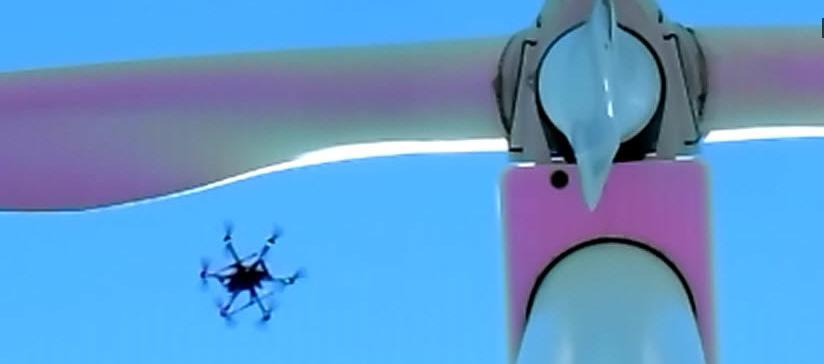YouTube is chock full of videos showing hobbyists flying planes carrying cameras. One video from Germany shows a quad-copter, a stable four-motor flying platform, as it buzzes around a working Enercon turbine (tinyurl.com/inspect-copter). Entertaining, yes, but why not put it to better use inspecting turbine blades? A few companies in Europe provide the service and several companies in the U.S. are exploring the possibility. Initial results look good. A high-resolution image can reveal small cracks, leading edge erosion, and delaminations. One of those exploratory companies, InspecTools (inpsectools.com), suggests great potential from the constantly changing technology.
The company says it has flown trial inspections on wind turbines in the U.S. and Germany operating in an R&D mode. That experience has brought the team close to a copter that works well, but the technology is in constant evolution, so no one copter works great in all circumstances.
In addition to producing high-def images, unmanned aerial vehicles (UAVs) can carry IR (infra-red or heat sensing) cameras that can find hot spots on solar panels. In one test, a UAV controller was inspecting electrical substations with an IR camera and, on a whim, pointed it at the blades on a nearby turbine. Surprisingly, he found hot spots indicating heat from a so far unidentified source; however, the jury is still out on the value of that discovery. In addition, early tests have taken detailed images of wind turbine towers that could reveal corrosion and coating issues.
InspecTools suggests that cameras could also help generate visualization models for the development of a wind or solar farm. UAVs can provide detailed elevation models, assist in planning roads, or grade the land.
A turbine inspection would take less than two hours, although there are a lot of variables in that (one blade can be imaged in 15 to 20 minutes). Considering setup and transport time from one turbine to the next, it might be possible to inspect 8 to 10 turbines in a day.
The only fly in the ointment is the FAA. The agency governs who flies where. For instance, hobbyists can fly up to 400 ft, while private aircraft should fly no lower than 500 ft, hence, the requirement for inspecting blades pointing down. However, these budding inspection companies think restrictive regulation will soon be corrected.
One company is said to have fitted its copter with a set of guide wheels so the controller can touch the inspection object and take pictures as needed. Precise positioning without wheels could come in part from GPS and possibly other sensors that might read in the shape of the blade and position.
Many groups are looking into other apps for the aircraft so the FAA is deciding what will fly in national airspace. The agency is concerned with collisions with commercial aircraft, the safety of people on the ground, and privacy.
Inspection companies are getting ready for updated FAA regulations on these matters that would free them from existing restrictions, and soon.
InspecTools
inspectools.com
Filed Under: News






This application of drones is just incredible! Researching more I found a wind turbine inspection demo video, check it out: https://www.youtube.com/watch?v=L8yWygGUAx0